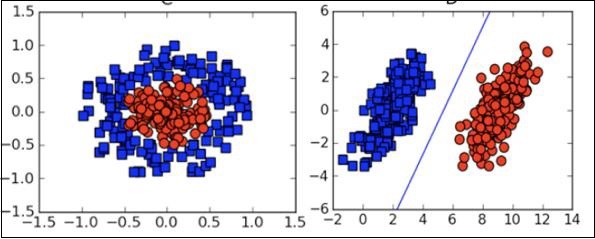
- Machine Learning Tutorial
- Machine Learning - Home
- Machine Learning - Introduction
- What Today’s AI Can Do?
- Machine Learning - Traditional AI
- What is Machine Learning?
- Machine Learning - Categories
- Machine Learning - Supervised
- Machine Learning - Scikit-learn Algorithm
- Machine Learning - Unsupervised
- Artificial Neural Networks
- Machine Learning - Deep Learning
- Machine Learning - Skills
- Machine Learning - Implementing
- Machine Learning - Conclusion
- Machine Learning Useful Resources
- Machine Learning - Quick Guide
- Machine Learning - Useful Resources
- Machine Learning - Discussion
- Selected Reading
- UPSC IAS Exams Notes
- Developer's Best Practices
- Questions and Answers
- Effective Resume Writing
- HR Interview Questions
- Computer Glossary
- Who is Who
Machine Learning - Skills
Machine Learning has a very large width and requires skills across several domains. The skills that you need to acquire for becoming an expert in Machine Learning are listed below −
- Statistics
- Probability Theories
- Calculus
- Optimization techniques
- Visualization
Necessity of Various Skills of Machine Learning
To give you a brief idea of what skills you need to acquire, let us discuss some examples −
Mathematical Notation
Most of the machine learning algorithms are heavily based on mathematics. The level of mathematics that you need to know is probably just a beginner level. What is important is that you should be able to read the notation that mathematicians use in their equations. For example - if you are able to read the notation and comprehend what it means, you are ready for learning machine learning. If not, you may need to brush up your mathematics knowledge.
$$f_{AN}(net-\theta)=\begin{cases}\gamma & if\:net-\theta \geq \epsilon\\net-\theta & if - \epsilon< net-\theta <\epsilon\\ -\gamma & if\:net-\theta\leq- \epsilon\end{cases}$$
$$\displaystyle\\\max\limits_{\alpha}\begin{bmatrix}\displaystyle\sum\limits_{i=1}^m \alpha-\frac{1}{2}\displaystyle\sum\limits_{i,j=1}^m label^\left(\begin{array}{c}i\\ \end{array}\right)\cdot\:label^\left(\begin{array}{c}j\\ \end{array}\right)\cdot\:a_{i}\cdot\:a_{j}\langle x^\left(\begin{array}{c}i\\ \end{array}\right),x^\left(\begin{array}{c}j\\ \end{array}\right)\rangle \end{bmatrix}$$
$$f_{AN}(net-\theta)=\left(\frac{e^{\lambda(net-\theta)}-e^{-\lambda(net-\theta)}}{e^{\lambda(net-\theta)}+e^{-\lambda(net-\theta)}}\right)\;$$
Probability Theory
Here is an example to test your current knowledge of probability theory: Classifying with conditional probabilities.
$$p(c_{i}|x,y)\;=\frac{p(x,y|c_{i})\;p(c_{i})\;}{p(x,y)\;}$$
With these definitions, we can define the Bayesian classification rule −
- If P(c1|x, y) > P(c2|x, y) , the class is c1 .
- If P(c1|x, y) < P(c2|x, y) , the class is c2 .
Optimization Problem
Here is an optimization function
$$\displaystyle\\\max\limits_{\alpha}\begin{bmatrix}\displaystyle\sum\limits_{i=1}^m \alpha-\frac{1}{2}\displaystyle\sum\limits_{i,j=1}^m label^\left(\begin{array}{c}i\\ \end{array}\right)\cdot\:label^\left(\begin{array}{c}j\\ \end{array}\right)\cdot\:a_{i}\cdot\:a_{j}\langle x^\left(\begin{array}{c}i\\ \end{array}\right),x^\left(\begin{array}{c}j\\ \end{array}\right)\rangle \end{bmatrix}$$
Subject to the following constraints −
$$\alpha\geq0,and\:\displaystyle\sum\limits_{i-1}^m \alpha_{i}\cdot\:label^\left(\begin{array}{c}i\\ \end{array}\right)=0$$
If you can read and understand the above, you are all set.
Visualization
In many cases, you will need to understand the various types of visualization plots to understand your data distribution and interpret the results of the algorithm’s output.

Besides the above theoretical aspects of machine learning, you need good programming skills to code those algorithms.
So what does it take to implement ML? Let us look into this in the next chapter.